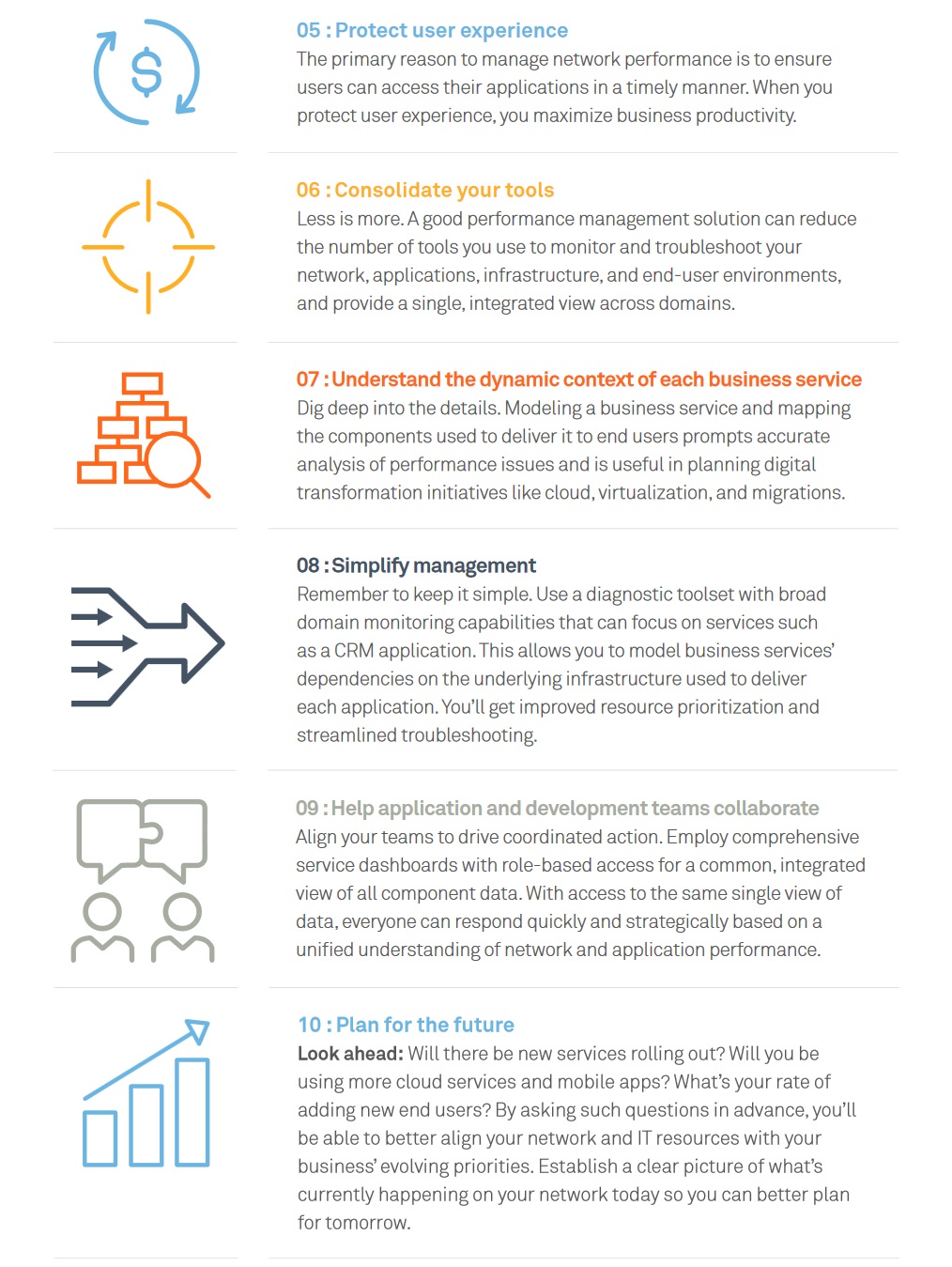
You need insight to maximize performance — not inefficient troubleshooting, longer time to resolution, and an overall lack of application intelligence. Steps 5 through 10 will help you maximize the performance of your applications and underlying network infrastructure:
Start with 10 Steps to Better Application and Network Performance - Part 1, for steps 1 through 4.

